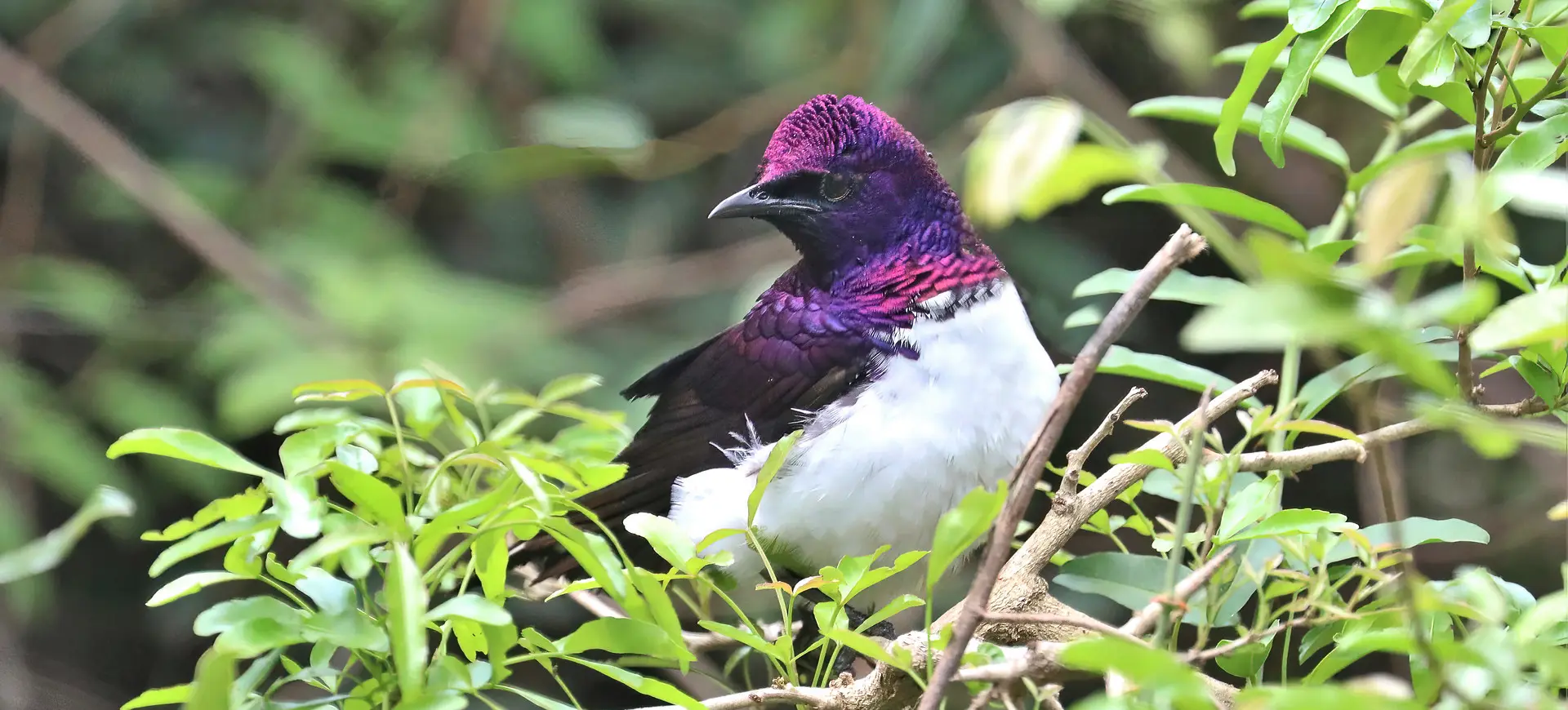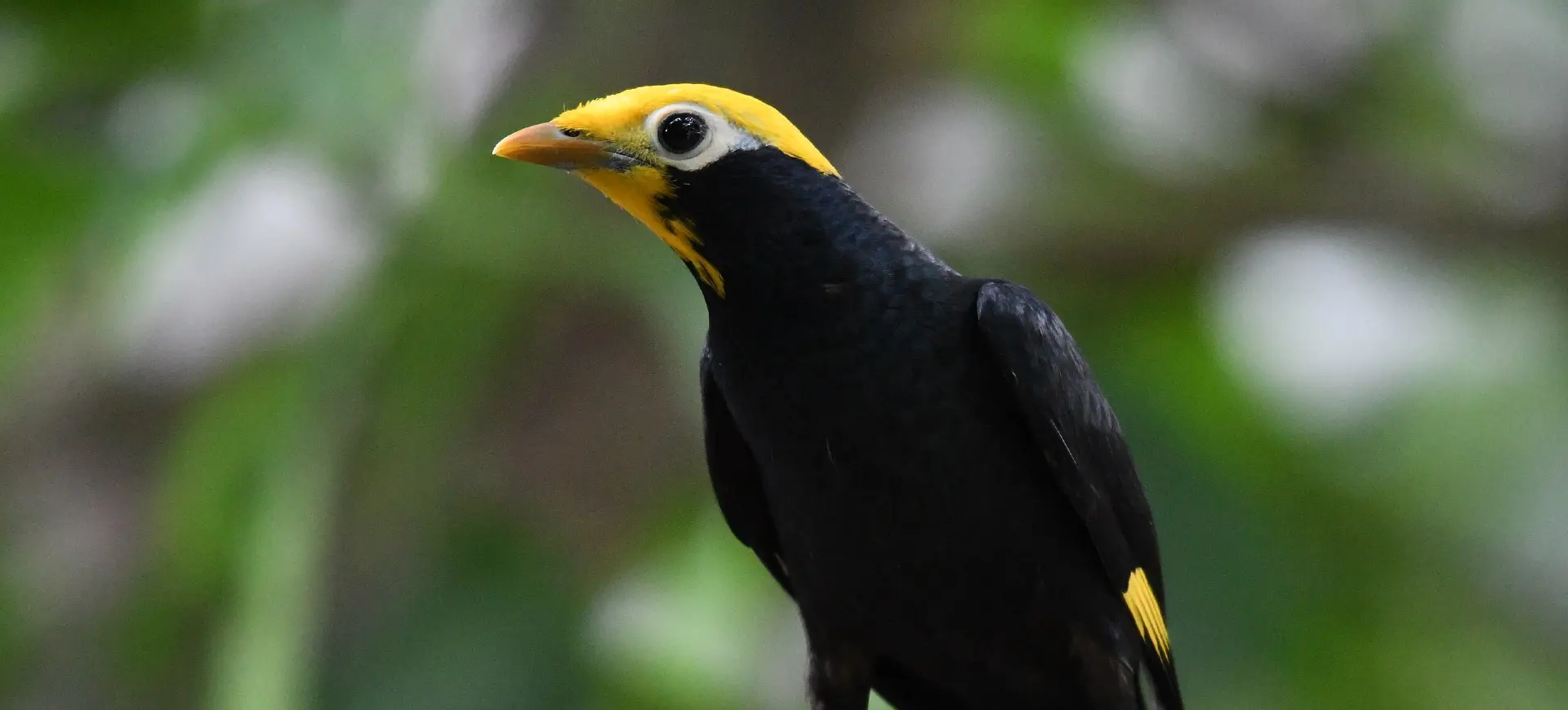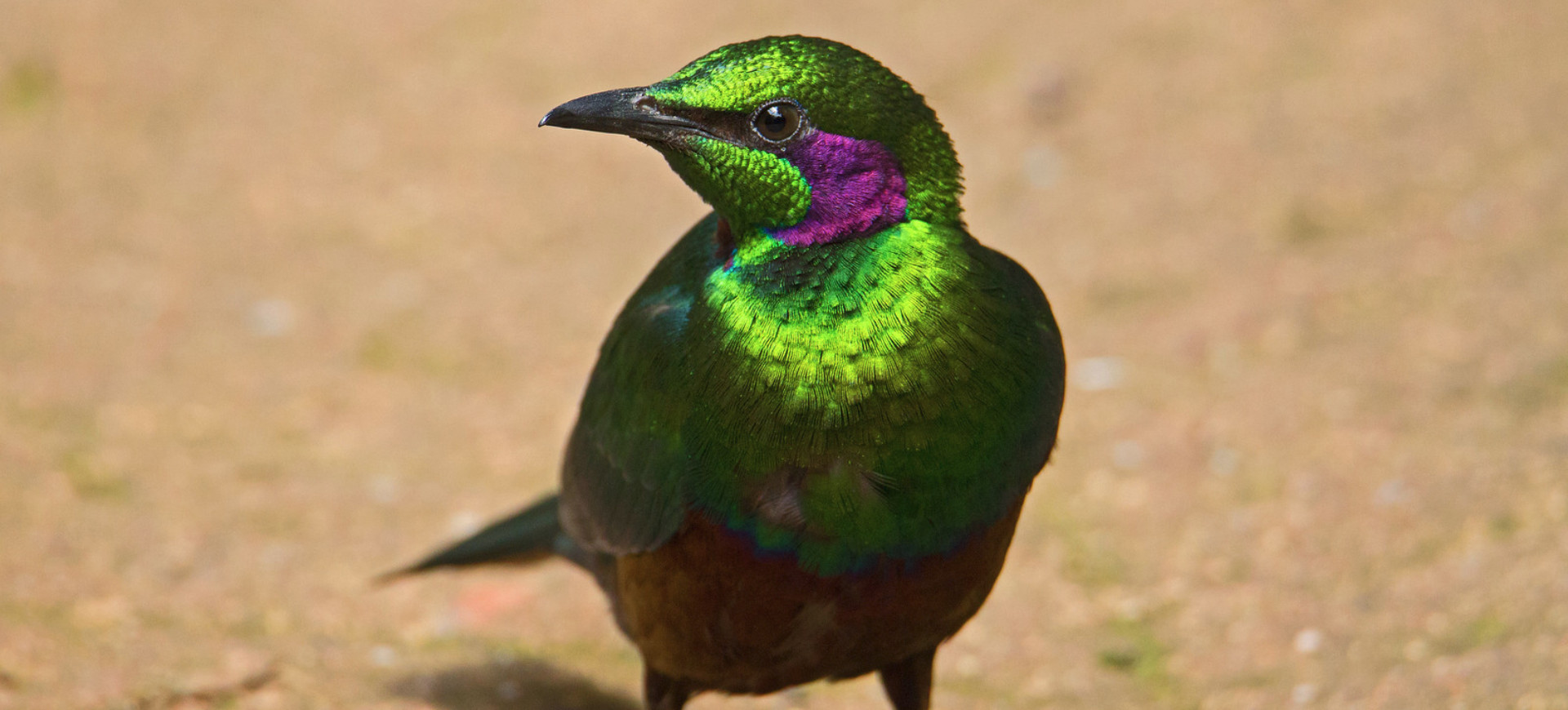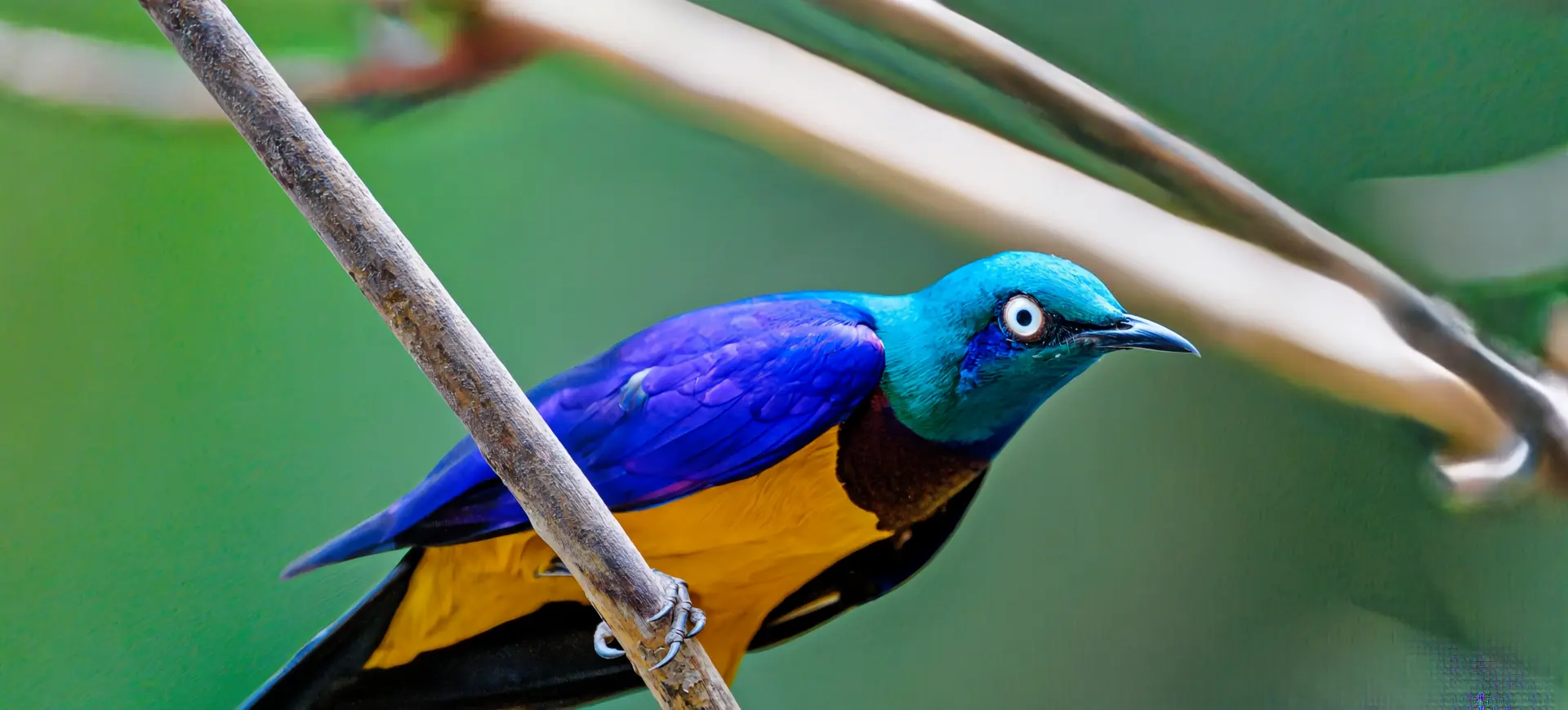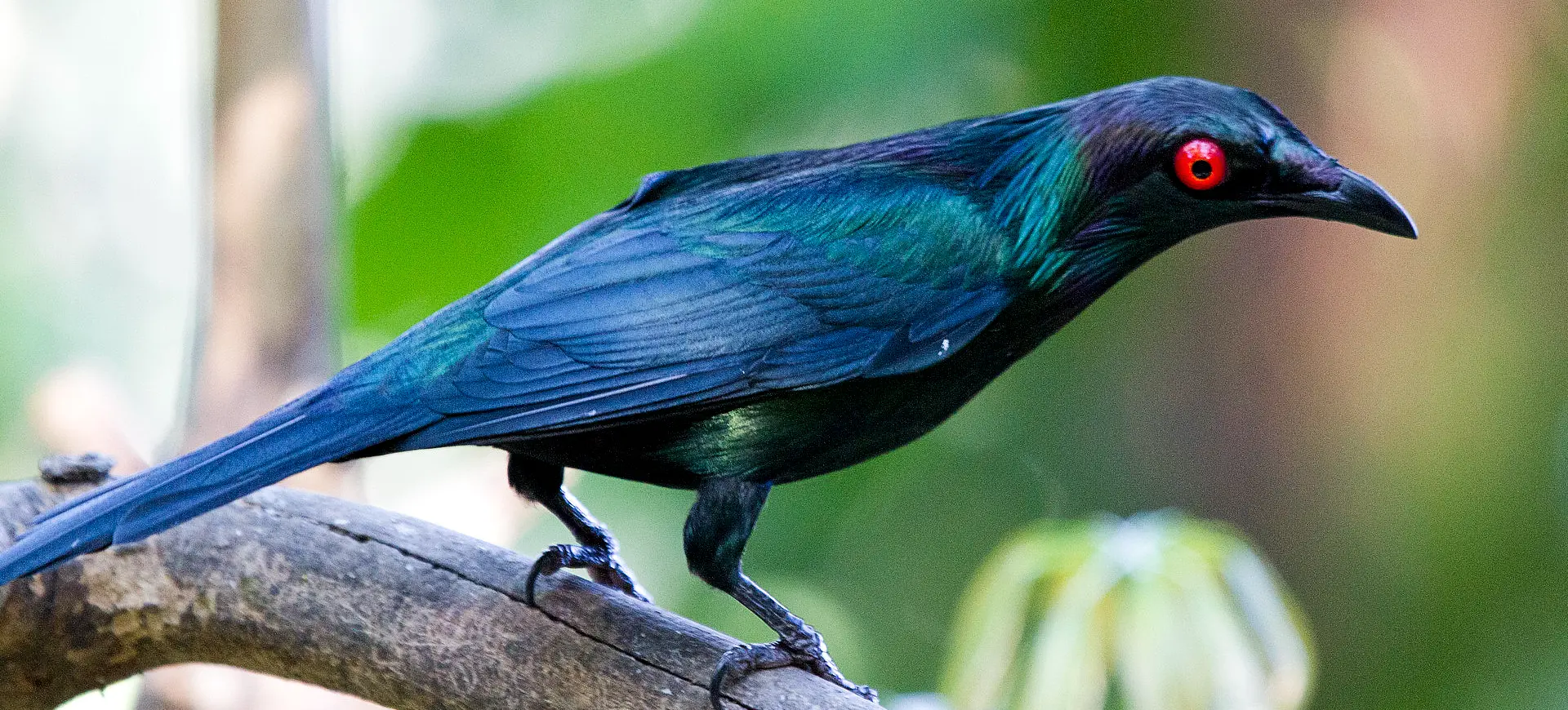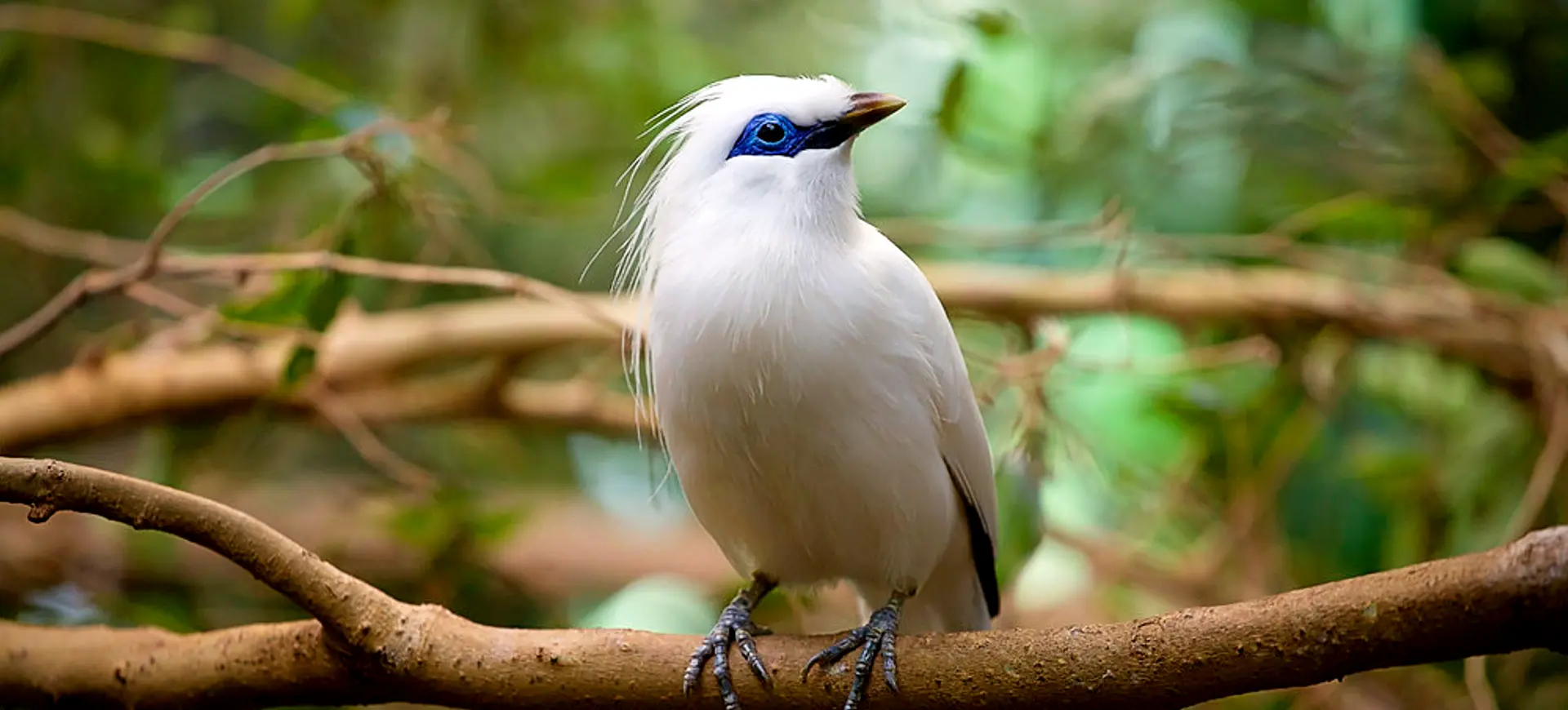Overview
The Superb Starling is a vibrant bird known for its incredibly vibrant plumage that showcases brilliant hues of blue and green against a contrasting backdrop of black and white. This bird is native to East Africa, occupying various habitats, including dry and moist regions. It is a highly social species, usually seen in large, chattering flocks.
These birds are not shy of humans and can often be seen foraging near human settlements, even snatching food scraps when available. They are known for their unique calls, including a wide range of whistles, warbles, and squeaks. Often, these sounds are woven together in complex songs used for communication within the flock.
Despite their small size, Superb Starlings adapt well to their environment, exhibiting unique behaviors and characteristics that allow them to thrive. They are excellent fliers, foragers, and communicators. They also exhibit cooperative breeding behavior, where non-parent individuals help in raising the young, a trait not commonly seen in bird species.
Taxonomy
Kingdom
Phylum
Class
Order
Family
Genus
Species
Type
Physical Description:
The Superb Starling is a small bird with a glossy, iridescent body. The head is black, sharply contrasting with the metallic blue-green of the body. Their wings are deep blue, and the breast is bright red-orange. The tail feathers are black-tipped with a white band. They also feature a white underbelly and a white horizontal line across the chest, differentiating them from other starling species.
The eyes are dark, surrounded by a narrow, bare patch of bright blue skin, which becomes more noticeable during the breeding season. Their stout, sharp beak is black, and they possess strong legs and feet of a similar dark hue. Both sexes have similar coloration, but juveniles have duller colors until they attain adult plumage.

Lifespan: Wild: ~15 Years || Captivity: ~20 Years

Weight: Male: 3.1-3.5 oz (88-100g) || Female: 2.8-3.2 oz (80-90g)

Length: Male: 7-8 in (18-20 cm) || Female: 6-7 in (15-18 cm)

Wingspan: Male & Female: 12-14 in (30-35 cm)

Top Speed: 31 mph (50 km/h)
Characteristic:
Native Habitat:
Superb Starlings inhabit the savannas, woodlands, and grasslands of East Africa. They prefer regions with a mixture of trees and open areas for foraging. They are highly adaptable and thrive in various habitats, including human-dominated landscapes.
They are found at various altitudes, from sea level to mountainous regions. These starlings have been observed nesting in tree holes or even in the walls of buildings. They are non-migratory but may move locally in response to changes in food availability or weather conditions.
Climate Zones:
Biomes:
Biogeographical Realms:
Continents:
Diet:
Diet & Feeding Habits:
Superb Starlings are omnivorous. They feed on various foods, including insects, seeds, fruits, and occasionally small rodents and reptiles. They have been observed to favor beetles and termites. They are opportunistic and will forage on the ground, probing the soil with their sharp beaks for hidden morsels.
In human-inhabited areas, they are known to scavenge, eating scraps and leftovers. During dry periods when food is scarce, they can survive solely on a diet of fruits and berries. Their adaptability and varied diet make them highly resilient to environmental changes.
Mating Behavior:
Mating Description:
Superb Starlings have a unique mating system known as cooperative polygyny, where one male mates with multiple females. These groups consist of a dominant male, several females, and subordinate males who help raise the offspring but do not mate with the females. This differs from many other bird species, where mating is typically monogamous.
Breeding can occur at any time of the year but most often happens during the rainy seasons when food is plentiful. The female lays 2-5 eggs in a nest built inside a tree hole or a building crevice. Both parents and helpers share the duties of incubating the eggs and feeding the chicks.
Reproduction Season:
Birth Type:
Pregnancy Duration:
Female Name:
Male Name:
Baby Name:
Social Structure Description:
Superb Starlings live in large, cooperative groups of up to 30 members. These groups include a dominant breeding pair, subordinate males, and juveniles. All members participate in raising the young and defending the territory from predators and rival starlings.
They are noisy and active birds, communicating with various calls and songs. They roost together in trees or on buildings, often returning to the exact location each night.
Groups:
Conservation Status:
Population Trend:
While exact numbers are unknown, Superb Starling populations in the wild are believed to be large and stable. They are standard across their range and even increase in some areas due to their adaptability to human-altered landscapes.
In captivity, they are famous for their bright plumage and lively behavior. They are found in zoos, aviaries, and as pets worldwide, though exact numbers are difficult to ascertain due to the lack of comprehensive records.
Population Threats:
The primary threats to Superb Starlings are habitat loss due to deforestation and changes in land use. However, these birds are highly adaptable and have survived and even thrived in human-dominated landscapes. Pesticides and other pollutants can affect their food supply and health.
They are sometimes hunted for their bright plumage or captured for the pet trade, though this is not a significant threat due to their widespread and stable population.
Conservation Efforts:
There are no targeted conservation efforts for the Superb Starling due to its widespread distribution and stable population. However, general conservation measures like habitat protection and pollution control will benefit this species.
Education and awareness campaigns can also help reduce hunting and capture for the pet trade. Moreover, since they often share habitats with humans, initiatives promoting coexistence can ensure their continued survival.
Additional Resources:
Fun Facts
- Superb Starlings are known for their complex vocalizations, including various whistles, warbles, and squeaks.
- Unlike many bird species, Superb Starlings have helpers at the nest. These helpers are usually offspring from previous seasons that assist in raising the new brood.
- They are not afraid of humans and can often be seen foraging in human-dominated landscapes.
- Their diverse diet ranges from insects and fruits to small rodents and reptiles.
- The shiny, iridescent plumage of Superb Starlings is due to the structure of their feathers, which reflect light in specific ways.
- They are one of the few bird species that practice cooperative polygyny, where one male mates with multiple females, and non-breeding males help raise the offspring.
- The Superb Starling’s scientific name, ‘Lamprotornis superbus,’ roughly translates to ‘magnificent shiny bird.’
- During dry periods, they can survive solely on a diet of fruits and berries.
- They have a wide range across East Africa and are adaptable to various habitats.
- Superb Starlings return to the same roosting spot each night, usually in large communal groups.







